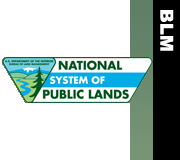|
Print Page | ||
Geographic Information Systems (GIS) Data Page | Projections | Three-Letter Codes | Map Geographic information systems (GIS) are systems composed of people, hardware, software, and data that are capable of assembling, storing, manipulating, and displaying spatially-referenced data. GIS technology combines layers of information about a particular place allowing a better understanding of that place. This powerful computer mapping system allows users to make customized maps in addition to solving complex planning and management problems. How does the BLM use GIS? In the business of managing public lands, the BLM collects and utilizes a great deal of information related to or describing a piece of land and the resources on and under it. Data might be information about bird nesting sites or wild horse herd use areas. It might be legal land survey information or legal descriptions of land parcels. The common thread is that this information is tied to the land. The technical term for this information is "geospatial data". |
|||







